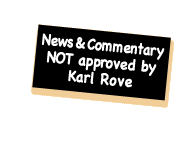Changes to LIBOR: Discontinuation of Canadian Dollar LIBOR
The London Inter-bank lending rate (LIBOR) underwent a number of changes last year that have impacted certain existing financial transactions and will continue to shape future transactions in 2014.
LIBOR is the primary global benchmark, or reference rate, for short term interest rates in major currencies. It is intended to reflect the average rate at which banks can obtain funding in the London inter-bank market for a particular currency and particular time period or “tenor”. The British Bankers Association (BBA) has, since 1986, operated and administered a screen LIBOR rate (BBA LIBOR) calculated from a panel of banks’ submission of the rates at which they can borrow funds.
Over the past few years, the operation of BBA LIBOR has increasingly been a matter of concern among regulators, participants and LIBOR users. The rate submissions that form the basis of BBA LIBOR are estimates of borrowing costs and not actual transactions. As a result, concerns have been raised regarding whether LIBOR is an accurate and reliable benchmark. Additionally, regulatory investigations by UK and overseas authorities have found that attempts have been made to manipulate LIBOR and other benchmarks.
To address these concerns, a review of LIBOR was undertaken by Martin Wheatley, the Chief Executive of theFinancial Conduct Authority (FCA) on behalf of the UK Government. This review, known as the “Wheatley Review”, resulted in the UK government’s implementation of a number of changes to LIBOR including the following:
1) Transfer of Administration of LIBOR to NYSE Euronext
In July 2013 it was announced that NYSE Euronext Rate Administration Ltd., a new subsidiary of NYSE Euronext, will take over the administration of LIBOR from the BBA. It is expected that the transfer of responsibilities will be completed by early 2014.


